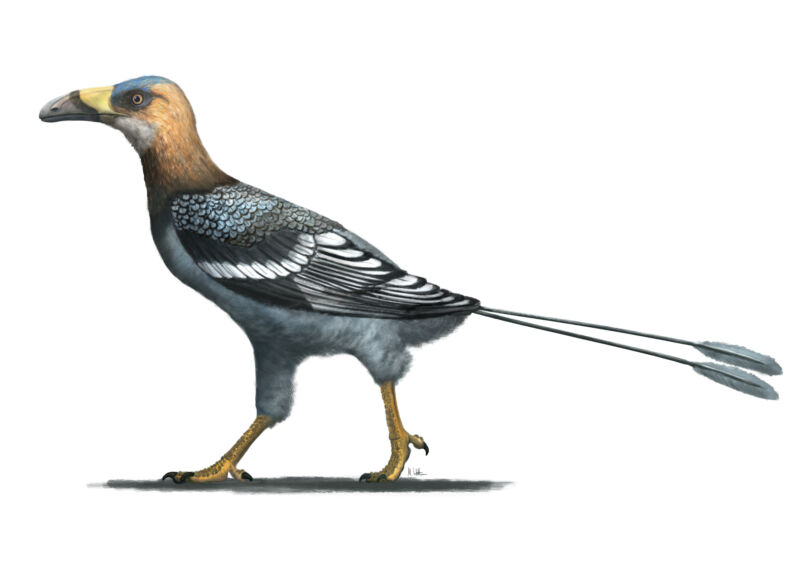QAnon “was first championed by a handful of people who worked together to stir discussion of the ‘Q’ posts, eventually pushing the theory on to bigger platforms and gaining followers — a strategy that proved to be the key to Qanon’s spread and the originators’ financial gain…” reports NBC News, in an article shared by long-time Slashdot reader AmiMoJo .
“NBC News has found that the theory can be traced back to three people who sparked some of the first conversation about Qanon and, in doing so, attracted followers who they then asked to help fund Qanon ‘research.'”
In November 2017, a small-time YouTube video creator and two moderators of the 4chan website, one of the most extreme message boards on the internet, banded together and plucked out of obscurity an anonymous and cryptic post from the many conspiracy theories that populated the website’s message board. Over the next several months, they would create videos, a Reddit community, a business and an entire mythology based off the 4chan posts of “Q,” the pseudonym of a person claiming to be a high-ranking military officer. The theory they espoused would become Qanon, and it would eventually make its way from those message boards to national media stories and the rallies of President Donald Trump.
Now, the people behind that effort are at the center of a fractious debate among conspiracy enthusiasts, some of whom believe the three people who first popularized the Qanon theory are promoting it in order to make a living. Others suggest that these original followers actually wrote Q’s mysterious posts…
Qanon was just another unremarkable part of the “anon” genre until November 2017, when two moderators of the 4chan board where Q posted predictions, who went by the usernames Pamphlet Anon [real name: Coleman Rogers] and BaruchtheScribe, reached out to Tracy Diaz, according to Diaz’s blogs and YouTube videos. BaruchtheScribe, in reality a self-identified web programmer from South Africa named Paul Furber, confirmed that account to NBC News. “A bunch of us decided that the message needed to go wider so we contacted Youtubers who had been commenting on the Q drops,” Furber said in an email… As Diaz tells it in a blog post detailing her role in the early days of Qanon, she banded together with the two moderators. Their goal, according to Diaz, was to build a following for Qanon — which would mean bigger followings for them as well… Diaz followed with dozens more Q-themed videos, each containing a call for viewers to donate through links to her Patreon and PayPal accounts. Diaz’s YouTube channel now boasts more than 90,000 subscribers and her videos have been watched over 8 million times. More than 97,000 people follow her on Twitter.
Diaz, who emerged from bankruptcy in 2009, says in her YouTube videos that she now relies on donations from patrons funding her YouTube “research” as her sole source of income. Diaz declined to comment on this story. “Because I cover Q, I got an audience,” Diaz acknowledged in a video that NBC News reviewed last week before she deleted it.
To reach a more mainstream audience (older people and “normies,” who on their own would have trouble navigating the fringe message boards), Diaz said in her blog post she recommended they move to the more user-friendly Reddit. Archives listing the three as the original posters and moderators show they created a new Reddit community… Their move to Reddit was key to Qanon’s eventual spread. There, they were able to tap into a larger audience of conspiracy theorists, and drive discussion with their analysis of each Q post. From there, Qanon crept to Facebook where it found a new, older audience via dozens of public and private groups…
As Qanon picked up steam, growing skepticism over the motives of Diaz, Rogers, and the other early Qanon supporters led some in the internet’s conspiracy circles to turn their paranoia on the group. Recently, some Qanon followers have accused Diaz and Rogers of profiting from the movement by soliciting donations from their followers. Other pro-Trump online groups have questioned the roles that Diaz and Rogers have played in promoting Q, pointing to a series of slip-ups that they say show Rogers and Diaz may have been involved in the theory from the start.
Those accusations have led Diaz and Rogers to both deny that they are Q and say they don’t know who Q is.
Read more of this story at Slashdot.
![]()
Source: Slashdot – Conspiracy Theorists Who’d First Popularized QAnon Now Accused of Financial Motives










